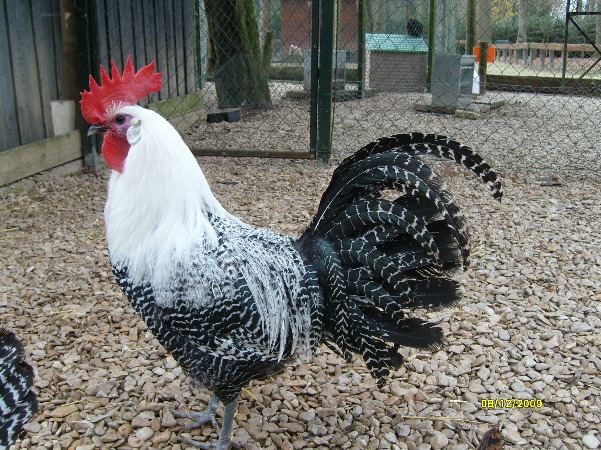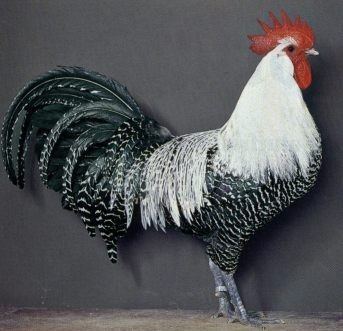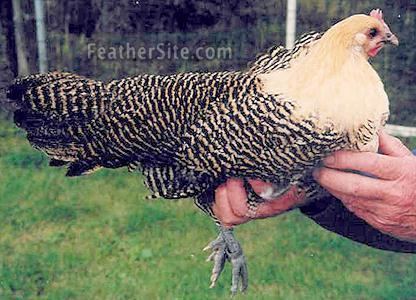Other names Brakel APA not listed Egg production (annual) 180 Temperament Active Egg color White | Country of origin Belgium Primary use eggs Egg size Small Recognized variety Gold, Silver | |
 | ||
Weight Male: 2–2.5 kgFemale: 1.8–2.2 kg PCGB rare soft feather: light Similar Lakenvelder, Brabançonne Chicken, Kraienkopp, Hamburg chicken, Faverolles chicken | ||
The Braekel or Brakel is one of the older European chicken breeds. Its history dates back to 1416, when it was mentioned as a successful poultry breed of the Brakel region, Belgium. There is a bantam version of the Braekel.
Contents
- Braekel barr e crayonn e argent e exposition avicole blodelsheim 2016
- History
- Characteristics
- Use
- References

Braekel barr e crayonn e argent e exposition avicole blodelsheim 2016
History

Two distinct types of Braekel were recognized in the past: the large type living on rich clay soil Flanders, and a light-weight type from the less fertile region, the Kempen. Due to crossbreeding between the different types, this distinction vanished, resulting in a single type.

In the UK, USA and Australia, however, one can still find descendants of the Kempische Brakel under its old name 'Campine'. The Campine has evolved differently from the Brakel. The most noticeable difference is the hen-feathering of the rooster and the lower weight.
Old names for the breed are "The Everyday Layer", "The Grey White Neck" and "The Nuns Hen".
The Brakel population declined during and after the Second World War and it is a rare breed.
Characteristics

The Braekel is a light breed; cocks weigh 2–2.5 kg and hens 1.8–2.2 kg. Bantam cocks weigh about 800 g and hens about 700 g. Ring sizes are 18 mm and 16 mm for standard-sized cocks and hens, and 13 mm and 11 mm respectively for bantams.
A straight banding pattern of the feathers and a uniform solid neck colour are characteristic of the Braekel. Several colour variants exist, with the gold and the silver variant being the most common.
Use
The Brakel is not cultivated for its meat, but merely for its egg-laying qualities. The breed is capable of producing 180 to 200 white eggs a year.
